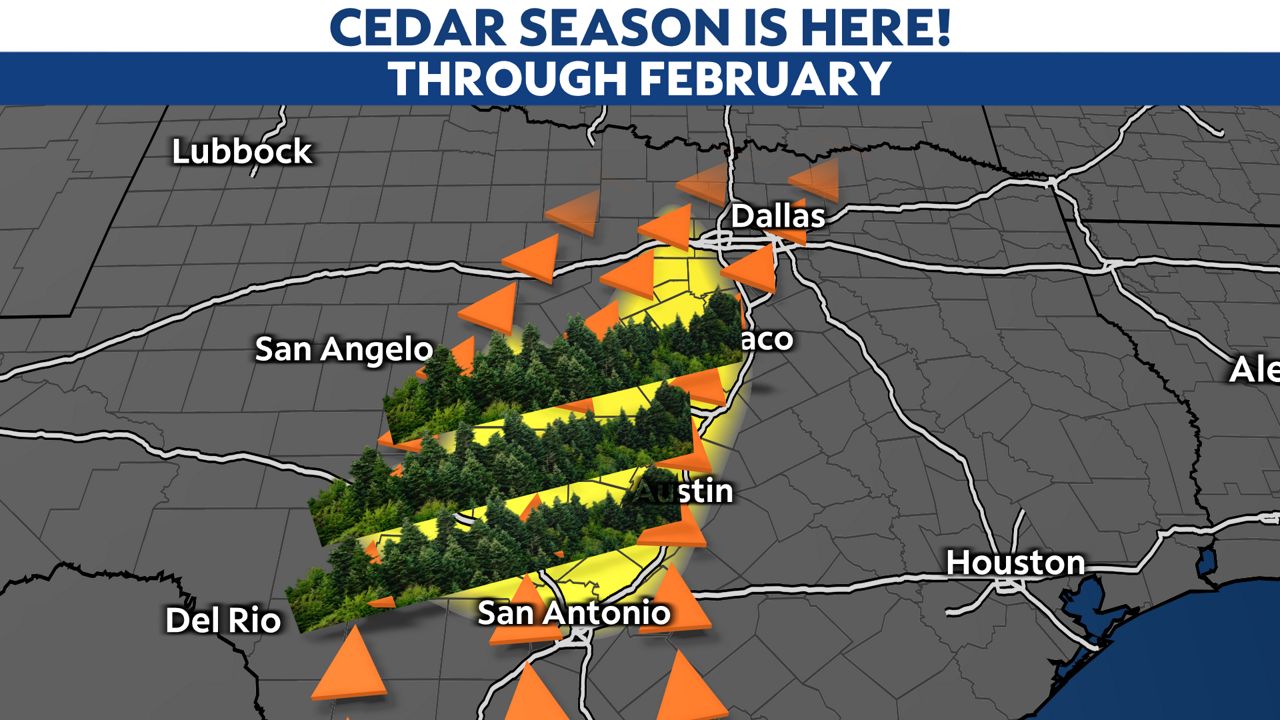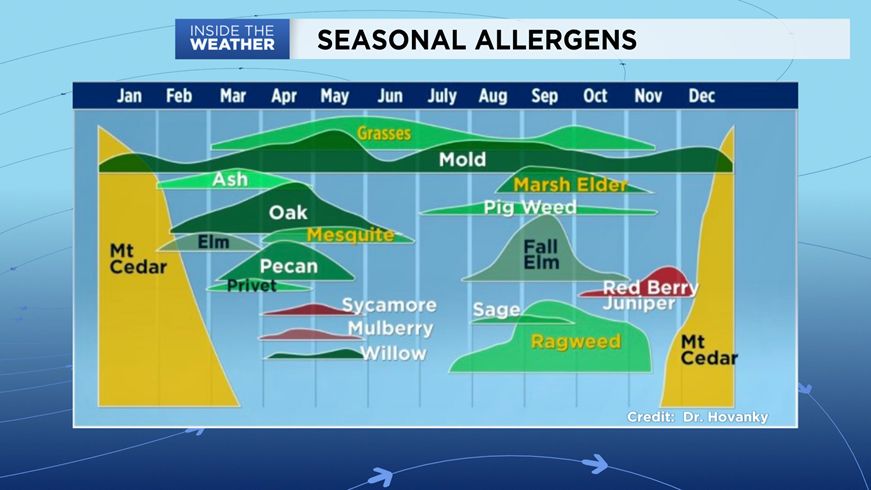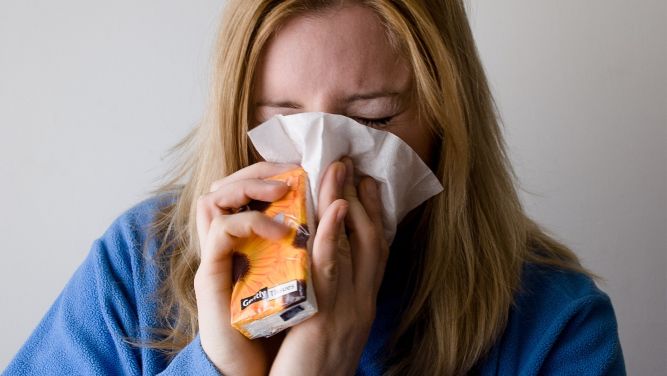AUSTIN, Texas — It’s that time of year when the air leads to countless sneezes and runny noses. As of Thursday, cedar season has officially returned to Texas.
The dreaded mountain cedar pollen that often leads to "cedar fever" is ramping up. High counts have been detected of the tree pollen that causes major issues for many Texans around this time of the year. One in five Central Texans are dealing with cedar fever, according to Baylor, Scott and White Health.
The major symptoms are itchy eyes, itchy throat, runny nose and nasal congestion. Despite the name, a fever typically does not accompany the symptoms.

While it is difficult to project how much mountain cedar will end up in the atmosphere, we do know that certain weather conditions can maximize the pollen count.
In order to knock the pollen from the trees, you need strong surface winds. There also needs to be warm air in place to help lift the pollen into the air. Strong winds and warm air are both in the forecast in the weeks ahead.
Once the pollen is suspended in the atmosphere, mid-level winds help to transport the mountain cedar from the Texas Hill Country to places all over the state.
Our weather experts say based on the current forecast, mountain cedar pollen will likely increase, amplified by a warmer and drier than normal winter.
Typically, we see cedar in the hundreds in early December. By mid-December, counts reach the 1,000s. The season peaks in January when counts get to 25,000 and higher.

Tips on how to get through cedar season:
- Keep your doors and windows closed. Run the air conditioner when the pollen is extremely high.
- Change your air conditioning filter often.
- Vacuum carpets and dust your home each week.
- Take a shower and change your clothes after being outdoors to wash away the pollen that lands on your clothes and in your hair.
- Don't forget about your pets! Make sure you bathe them often.
- Over-the-counter antihistamines or decongestants in pill, spray or eye drop form may help control symptoms.
- Doctors can also prescribe oral or nasal corticosteroids and anti-inflammatory drugs.
